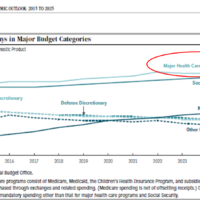At a recent meeting about implementing the Accountable Affordable Care Act, Karen Ignagni, (President and CEO of the America’s Health Insurance Plans), listed 8 variables that are fueling increasing healthcare costs – and thus need to be addressed to “bend the cost curve”:
- Prices of services (Not insurance premiums, which mostly reflect input prices, i.e., the cost of healthcare services and products.)
- Variations in care delivery practices and how that impacts safety (She also suggested that transparency and reporting measurements for 10-12 key conditions would significantly help reduce care variation – which can improve quality and drive down costs)
- Measurement (Alignment between public and private sector reporting requirements to make #2 more feasible for healthcare delivery systems already struggling with data collection, analysis, and reporting.)
- Value Based Benefits (Particularly getting people with chronic conditions into stable, care coordinating systems)
- Impact of consolidation – both horizontal and vertical (See the recent Synthesis Project Brief on this topic)
- Scope of practice (Enabling clinicians at all levels to practice at the top of their capabilities, which will help address growing clinician shortages)
- Building and Construction (Other people at the meeting noted the problem with building and infrastructure. Don Berwick noted “stranded capital” is a challenge for delivery systems, and another speaker noted that most healthcare organizations were literally designed and built to maximize revenues under the volume incentivizing fee-for-service system rather than prioritizing value or community health status)
- Power of States (Non-Federal government officials and regulations are important determinants of public health activities, clinicians scope of practice, and collaborations among local stakeholders)
Karen’s list – like Don Berwick’s list from my previous post – is a very valuable tool that I’ll keep in mind when evaluation local, regional, and national proposals for controlling healthcare spending.
P.S.
I’ve known Karen for about 20 years, since she was the health lobbyist for the AFL-CIO and we were on a panel taking about how to improve primary care. The discussion mostly focused on how to increase the number of primary care clinicians and access in the era of emerging managed care. I particularly remember that part of the discussion involved the hazards of calling primary care clinicians “gatekeepers v. “care coordinators.” It all sounds a bit familiar doesn’t it?

